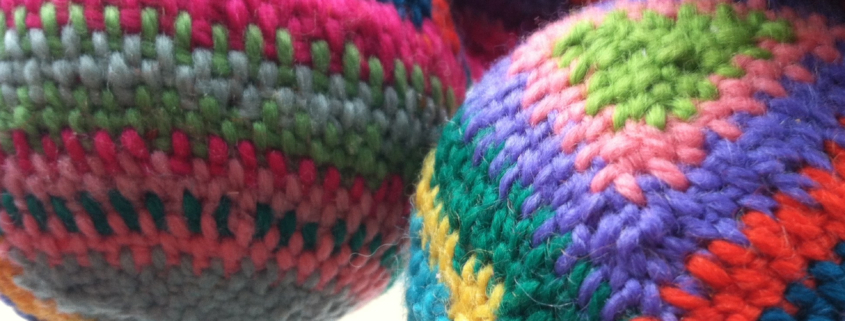
- This event has passed.
Singlade Balls (Singlade Bollar)
October 12, 2024 @ 12:30 pm - 3:30 pm

Learn how to make singlade balls or singlade bollar (traditional hand-stitched balls made from wool yarn). These can be used as a child’s toy or toy for a cat. It’s a great way to use those colorful bits of yarn in your stash.
Archival evidence from museums in Sweden indicates that the craft started around the early 1800s. Singlade bollar have been found in southern Sweden, Denmark, and northern Germany. The craft is likely to have been spread throughout the region via the Baltic Sea trade route.
Kate Sterner learned this handicraft from her Danish grandfather and has created a website dedicated to preserving and furthering this craft. Join Kate and have fun keeping a tradition alive.
Skill level: Beginner.
Student Age: 16 years and over.
Supplies needed: Scissors, a sharp, large-eye, 3-inch darning needle (or purchase one from Kate for $1), and worsted weight, 4-ply wool yarn in as many colors as you want. Kate also will have plenty of colors of yarn from her own stash to use in class.
Note: Students should not expect to complete the project in this time. However, Kate will teach students what they need to complete their Singlade Balls at home. (Normally a ball takes about 6-8 hours to make.)
Class Size: Limited to 4 students.
Register here: Eventbrite.
Cancellation Policy: Up to 3 weeks before the event – 50% refund. Under 3 weeks before the event, no refunds.
INSTRUCTOR INFORMATION
Kate Sterner’s Danish grandfather taught her how to make singlade balls (singlade bollar) when she was 10 or 11 years old. He learned from his mother while he was a boy in Denmark and enjoyed passing the craft down to the next generation. Though several of her cousins learned the craft from their grandfather, Kate is the one who kept making singlade balls throughout the years, teaching others who found the balls intriguing.
SWEDISH PRONUNCIATION
Singlade, pronounced: sing’ la deh. Singlade is a Swedish word that has a couple of meanings. The base of the verb is “singla,” meaning to toss or fling. However, in this case, the verb describes the embroidery technique used to stitch these balls. So, you “singla” a ball.


